18 Beautiful Vacation Destinations That Most Tourists Don’t Know About — Plus 3 Insider Tips To Actually Visit Them
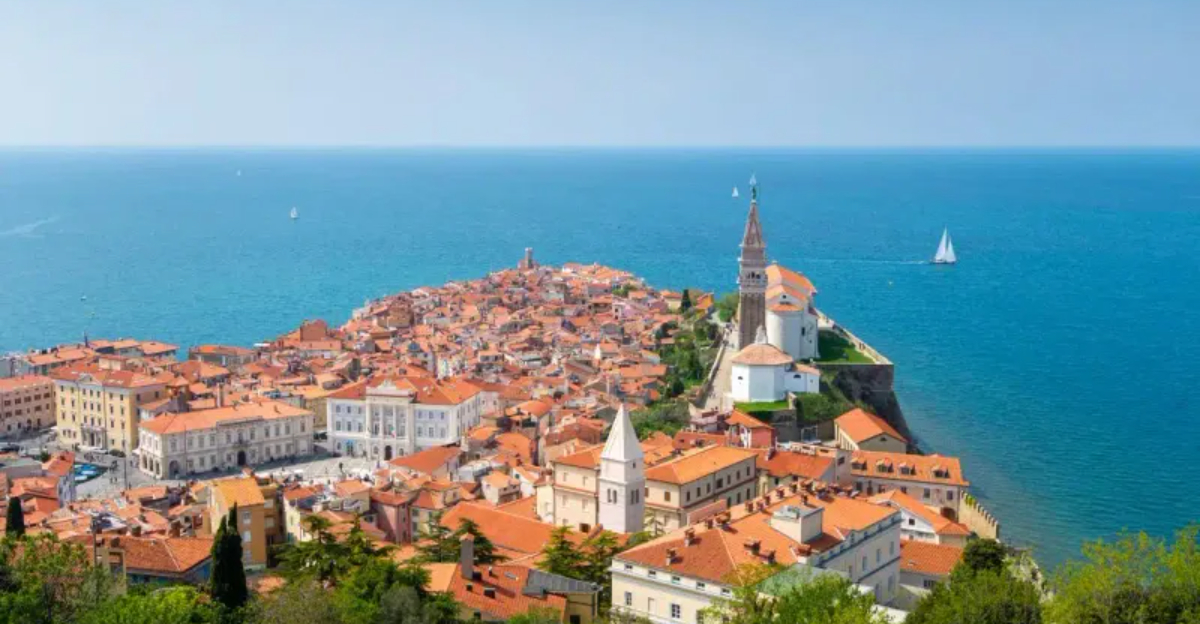
Ever dreamed of escaping the crowds and discovering breathtaking places that aren’t plastered all over Instagram? The world is full of magical destinations that remain wonderfully untouched by mass tourism.
I’ve spent years exploring these hidden gems and have compiled my absolute favorites. Let me share these secret spots plus some insider knowledge to help you actually get there.
1. Lake Bohinj, Slovenia
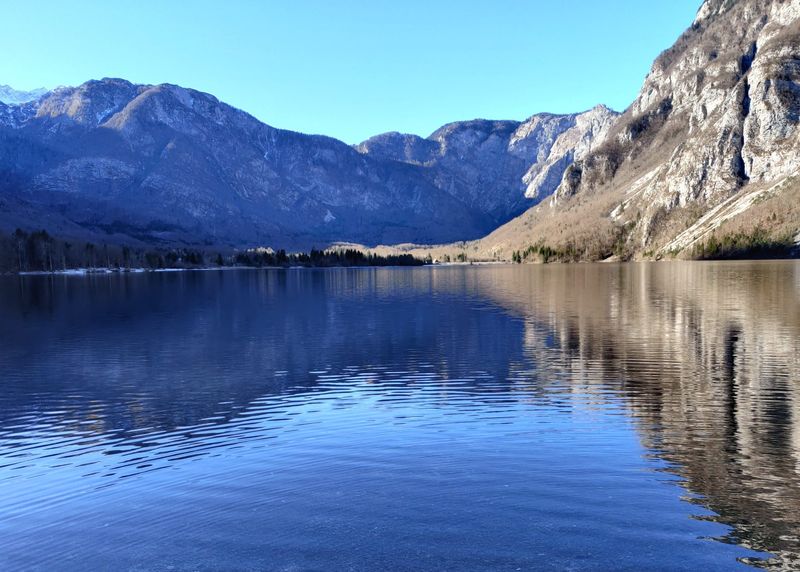
While tourists flock to Lake Bled, Lake Bohinj sits quietly just 30 minutes away, offering pristine alpine beauty without the crowds. Crystal-clear waters reflect towering mountains in this glacial lake hidden within Triglav National Park.
Hiking trails wind through forests and meadows, leading to waterfalls and panoramic viewpoints. You can swim, kayak, or simply relax on peaceful shores where locals outnumber visitors.
The small villages around the lake maintain authentic Slovenian culture with family-run restaurants serving traditional fare. Visit the 700-year-old Church of St. John the Baptist near the stone bridge for a glimpse into the region’s rich history.
2. Book Shoulder Season Flights (Insider Tip)

Flying just before or after peak tourist season can save you serious money while still giving you great weather at your destination. May and September often offer perfect conditions with half the crowds and significantly lower prices.
Set price alerts on multiple flight search engines at least three months before your intended travel dates. Many airlines release their best deals on Tuesdays and Wednesdays, so that’s when you should be ready to book.
Consider flying mid-week instead of weekends for additional savings. Tuesday and Wednesday departures typically cost 20-30% less than Friday through Sunday flights. Pack light to avoid baggage fees that can quickly add up.
3. Kotor, Montenegro Charm
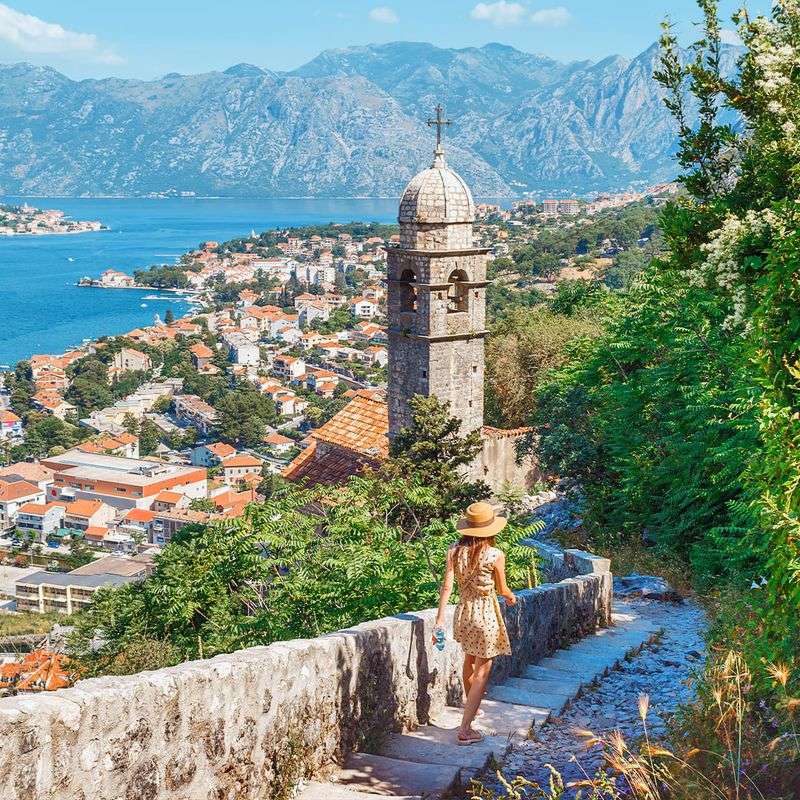
Nestled between dramatic mountains and a stunning bay, Kotor feels like stepping into a medieval fairytale that tourists haven’t yet discovered. Ancient stone walls climb impossibly steep mountainsides, protecting a maze of narrow streets and hidden squares below.
Mornings in Kotor begin with locals selling fresh fish and produce in tiny markets. By afternoon, you can climb the 1,350 steps to San Giovanni Fortress for breathtaking views of terracotta rooftops against the deep blue bay.
Cats roam freely throughout this UNESCO site, considered unofficial guardians of the city. When hunger strikes, family-run konobas serve seafood caught that morning alongside local wines at prices that will make you wonder why you ever vacationed elsewhere.
4. Fly Into Nearby Hubs (Insider Tip)

Major airports often charge premium prices, but flying into smaller airports nearby can cut your costs dramatically. Research alternative airports within 1-2 hours of your destination – the savings often justify the extra travel time.
Most secondary airports offer shuttle services or affordable public transportation to popular areas. I once saved $400 flying into Bologna instead of Florence, then took a $25 train ride to reach my final destination.
These lesser-used airports typically have shorter security lines and less hectic terminals. Your luggage usually arrives faster too! When booking, use flight search engines that include the “nearby airports” option to compare all possible routes and find the best deals.
5. Valle de Bravo, Mexico
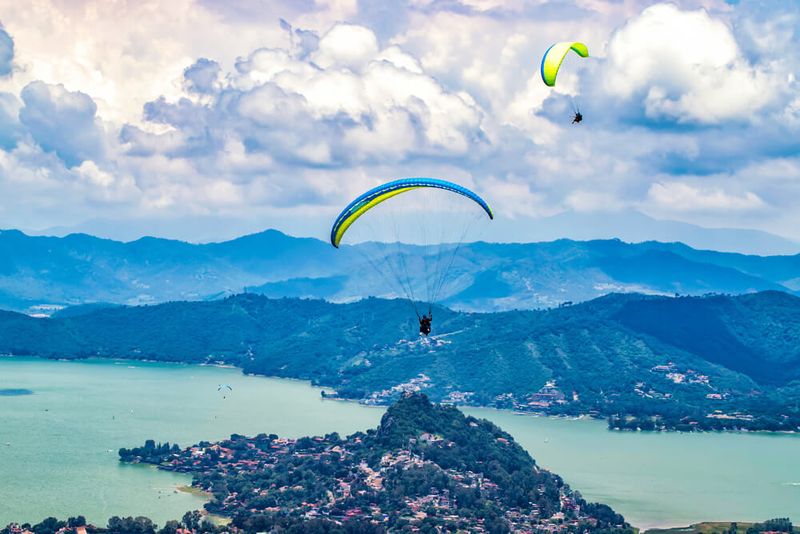
Just two hours from Mexico City lies a magical lakeside town where weekending chilangos (Mexico City locals) go to escape the urban chaos. Valle de Bravo wraps around a massive reservoir with cobblestone streets climbing gentle hills lined with white adobe buildings and red tile roofs.
Paragliders drift above the lake like colorful butterflies – the town is famous for perfect thermal conditions. You can watch them from waterfront restaurants serving freshly caught fish while sailboats glide by.
Monarch butterflies make this their winter home, filling nearby forests with orange wings from November through March. Weekdays bring peaceful exploration opportunities when the town empties of domestic tourists, leaving you to discover hidden courtyards and artisan workshops making hand-painted pottery.
6. Use Local Guides Only (Insider Tip)
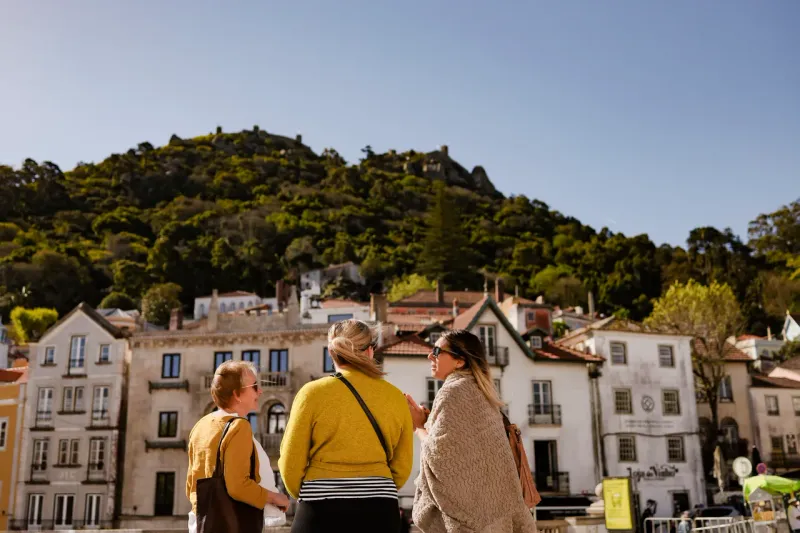
Skip the international tour companies and connect directly with guides who actually live in your destination. Local experts know hidden spots that never appear in guidebooks and can introduce you to authentic experiences at fraction of tourist prices.
When searching for guides, look beyond the first page of Google results. Facebook groups dedicated to your destination often have recommendations from other travelers who’ve found exceptional local guides.
Most importantly, local guides understand cultural nuances and current conditions. They’ll know which areas to avoid, when certain attractions are least crowded, and where locals actually eat. I’ve discovered my favorite hidden beaches, family restaurants, and breathtaking viewpoints exclusively through recommendations from local guides who became friends.
7. Saaremaa, Estonia
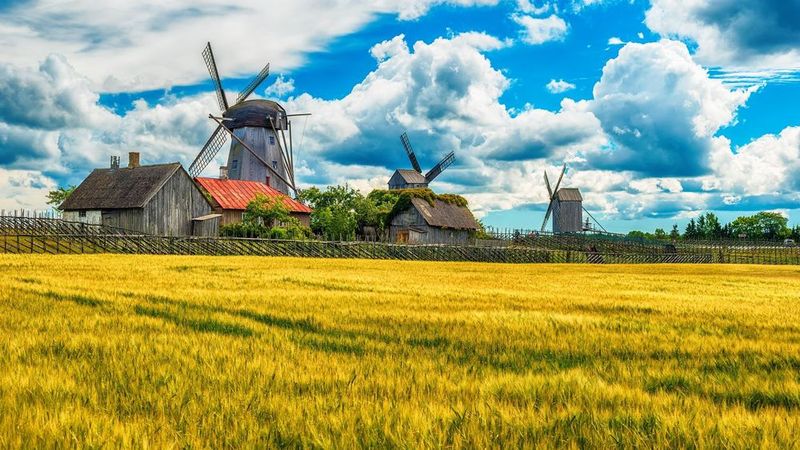
Windmills and juniper trees dot this Baltic island where time seems to move more slowly than the mainland. Estonia’s largest island remains mysteriously untouched by international tourism despite its stunning beauty and fascinating history.
Meteor craters, medieval churches, and pristine beaches create an otherworldly landscape. The 13th-century Kuressaare Castle stands perfectly preserved, surrounded by moats where children sail toy boats in summer.
Locals still practice ancient traditions like brewing koduõlu (farmhouse ale) and building traditional wooden boats. Women gather wild herbs for teas and remedies while men smoke fish in wooden saunas. Village grandmothers sell hand-knitted wool socks and mittens featuring traditional star patterns that supposedly protect the wearer from evil – perfect souvenirs from this magical island.
8. Colmar, France Streets

If Disney animators designed a French town, it might look like Colmar with its candy-colored half-timbered houses lining canal-side streets. This Alsatian gem sits tucked away near the German border, often overshadowed by nearby Strasbourg.
The “Little Venice” quarter features flower-draped bridges and waterways where small boats glide past buildings dating back to the 14th century. Each structure seems to compete with neighbors through intricate wooden details and vibrant paint schemes.
Family-owned wine cellars offer tastings of local Rieslings and Gewürztraminers grown in surrounding vineyards. The covered market hall sells regional specialties like tarte flambée and kugelhopf. Visit during December when the already-magical streets transform with twinkling Christmas markets that remain blissfully less crowded than their famous counterparts.
9. Gjirokastër, Albania Views
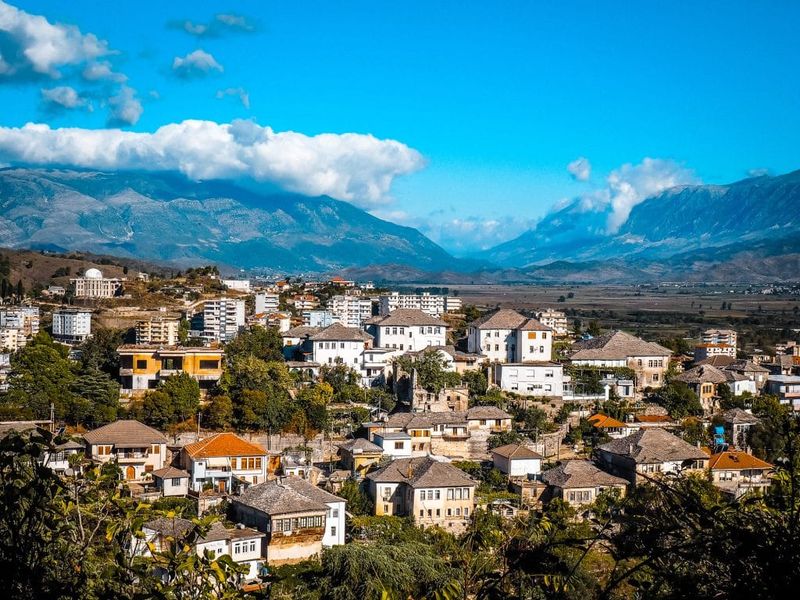
Clinging dramatically to a mountainside, this Ottoman-era stone city offers panoramic views across a lush valley that few travelers ever witness. UNESCO-protected Gjirokastër features distinctive slate-roofed houses that resemble small fortresses cascading down steep slopes.
Each home contains secret rooms and hidden passages dating from turbulent times when families needed quick escapes. The massive castle crowning the city houses a fascinating arms museum with weapons spanning centuries of Balkan conflicts.
Grandmothers sit in doorways creating intricate lacework while the scent of slow-cooked lamb and fresh bread fills narrow cobblestone streets. Local guides proudly show visitors the childhood home of author Ismail Kadare, whose novels captured the city’s mysterious atmosphere. Coffee shops serve thick Turkish-style brews in copper pots alongside sweet baklava made with local honey.
10. Sibiu, Romania Heritage
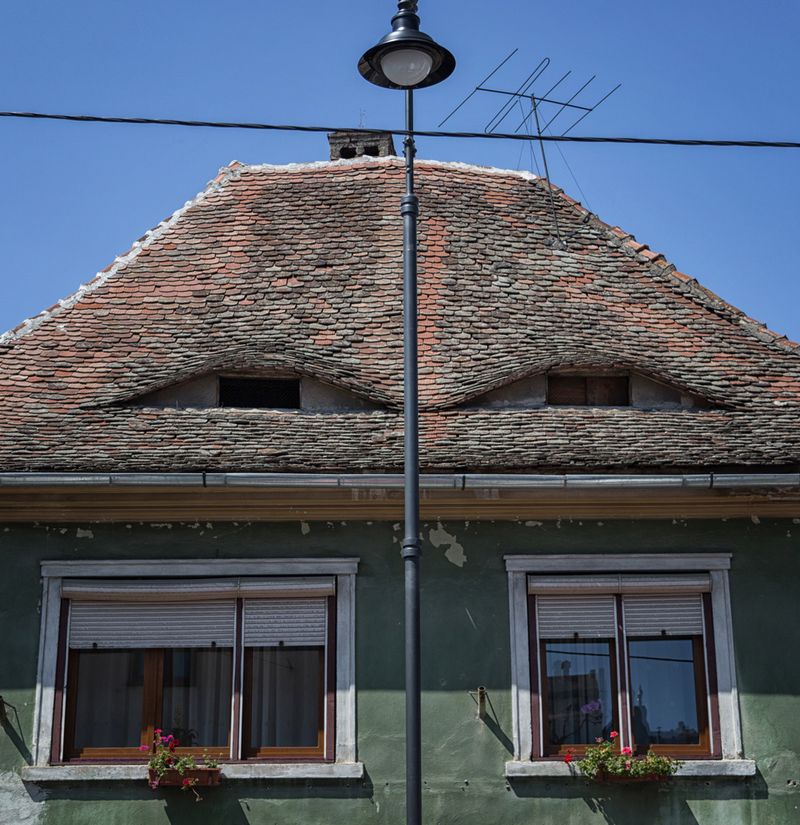
Houses with eyes watch your every move in this Transylvanian city where roof windows resemble vigilant sentinels. Sibiu’s medieval center features three interconnected squares surrounded by buildings in pastel hues, their distinctive rooftops creating the illusion of a city that’s constantly observing visitors.
The Bridge of Lies supposedly creaks when someone tells an untruth while crossing it. Test this legend while moving between the Upper and Lower Towns, connected by narrow passages and stairways that create a labyrinthine exploration experience.
Cafés spill onto cobblestone squares where locals gather to sip țuică (plum brandy) and discuss politics. Underground cellars house traditional restaurants serving sarmale (cabbage rolls) and mămăligă (polenta) beneath centuries-old vaulted ceilings. The Astra open-air museum nearby preserves rural Romanian life with over 300 historic buildings.
11. Svalbard, Norway Wilderness
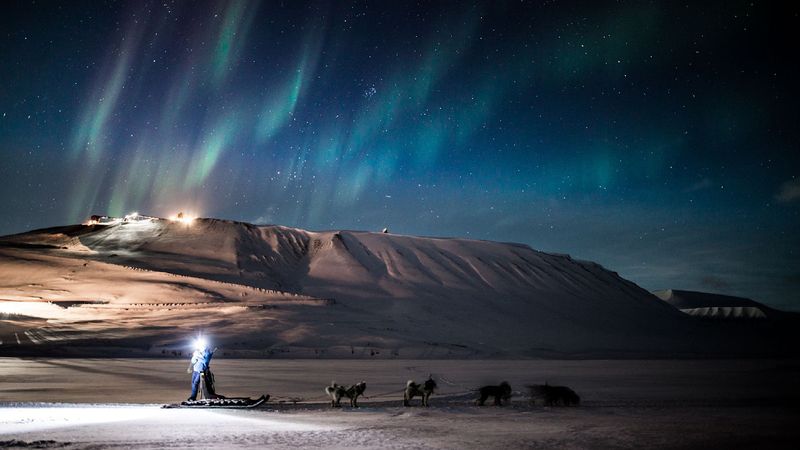
Polar bears outnumber humans in this Arctic archipelago where the northern lights dance across winter skies for months. Located halfway between mainland Norway and the North Pole, Svalbard offers wilderness experiences that feel genuinely unexplored despite being surprisingly accessible.
Summer brings the midnight sun, illuminating glaciers, mountains, and fjords in perpetual golden light. Wildlife encounters happen naturally – reindeer wander through the main settlement of Longyearbyen, while Arctic foxes dart between buildings.
The world’s northernmost everything exists here – from craft brewery to fine dining restaurant. Seeds from every corner of Earth rest safely in the Global Seed Vault, buried deep in permafrost. Dog sledding adventures take you across landscapes that haven’t changed since the Ice Age, while abandoned Soviet mining towns create hauntingly beautiful photography opportunities.
12. Guimarães, Portugal Alleys
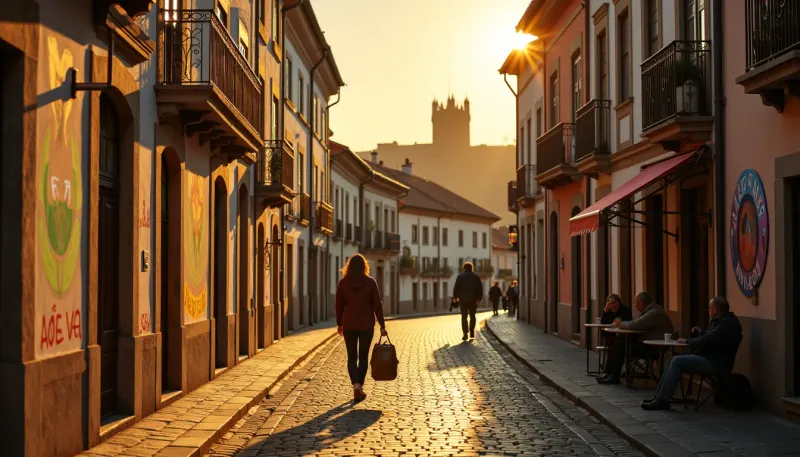
Portugal’s birthplace remains remarkably untouched by international tourism despite its significance as the nation’s first capital. Medieval granite buildings with red-tiled roofs create a time-capsule atmosphere in narrow alleys that suddenly open to charming plazas.
The phrase “Portugal was born here” adorns walls throughout the historic center, where the country’s first king was born in the 12th century. Castle ruins offer sweeping views across terracotta rooftops to green mountains beyond.
Students from the local university fill traditional tascas (taverns) serving vinho verde (young wine) produced just minutes away in surrounding vineyards. Elderly women still wash clothes in communal stone tanks while sharing town gossip. Artisans work traditional crafts in small workshops – look for delicate filigree jewelry made using techniques unchanged for centuries.
13. Piran, Slovenia Coast
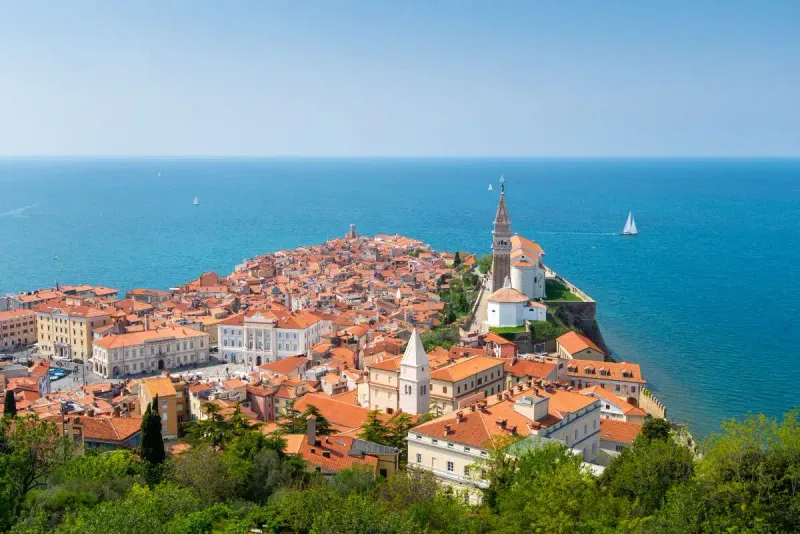
Venice’s architectural influence without the crowds defines this compact medieval jewel jutting into the Adriatic Sea. Piran occupies a narrow peninsula where Venetian Gothic buildings in sunset hues crowd together so tightly that cars are banned from the old town.
Tartini Square forms the heart of the city, named for the famous composer born here. Surrounding buildings feature ornate balconies where residents watch the world go by while sipping malvasia wine from nearby vineyards.
Climb the bell tower for breathtaking views across terracotta rooftops to three countries – Slovenia, Italy, and Croatia. Fresh seafood restaurants serve catch-of-the-day along the harbor where fishing boats still outnumber pleasure craft. Salt harvested from nearby traditional salt pans using medieval methods makes a perfect souvenir.
14. Tinos, Greece Calm
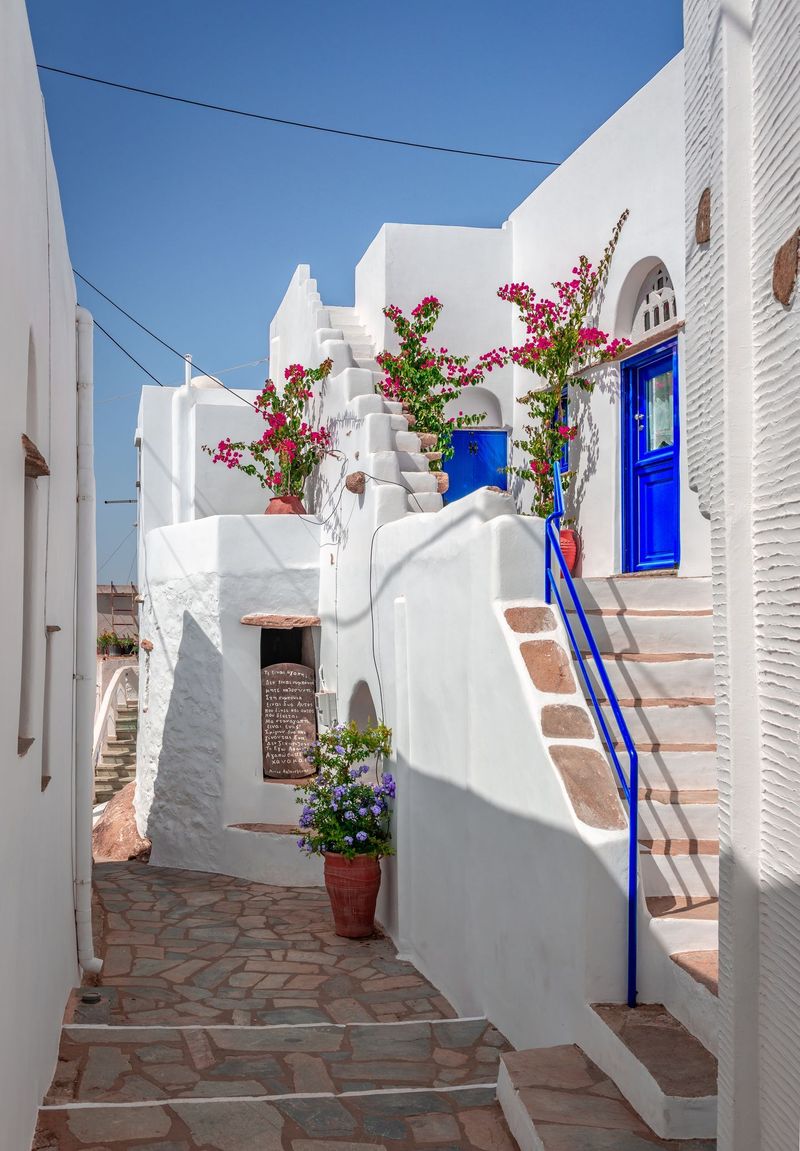
Religious pilgrims know this Cycladic island for its sacred Orthodox church, but travelers seeking authentic Greek experiences without Santorini’s crowds have yet to discover its charms. Whitewashed villages cascade down hillsides dotted with blue-domed churches and over 1,000 artistic dovecotes – elaborate stone structures built for pigeons.
Marble craftsmen have practiced their art here for generations, creating everything from simple doorframes to intricate church iconostases. Their workshops welcome visitors in villages like Pyrgos, where even street signs are marble masterpieces.
Beaches with crystal waters remain blissfully undeveloped compared to neighboring islands. Women in black still make traditional pasta by hand, hanging it to dry on lines outside blue-shuttered homes. Tavernas serve mastelo (cheese) and artichoke hearts grown in island gardens alongside locally-pressed olive oil.
15. Cuenca, Ecuador Balance
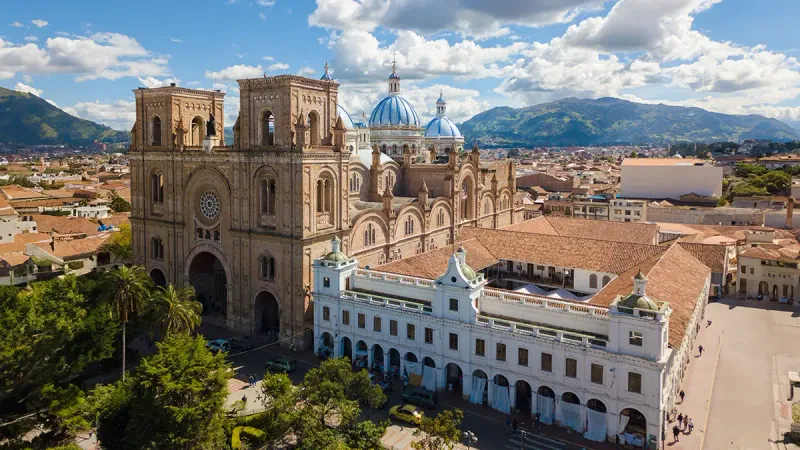
Red-tiled roofs and cobblestone streets create a colonial dreamscape in this Andean city where indigenous and Spanish cultures blend seamlessly. Situated in a valley surrounded by four rivers, Cuenca maintains perfect year-round spring temperatures at 8,400 feet elevation.
The historic center features grand cathedrals with gold-leaf altars alongside markets where indigenous women in traditional dress sell herbs and handcrafts. Panama hats (which actually originate from Ecuador, not Panama) are still woven by hand using ancient techniques.
Retired expats have discovered this affordable paradise, but tourists remain surprisingly few. Local families stroll the riverside promenades each evening while musicians perform in hidden courtyards. Markets overflow with exotic fruits unknown outside Ecuador – try tree tomatoes and naranjillas for unique flavor experiences.
16. Albarracín, Spain Colors
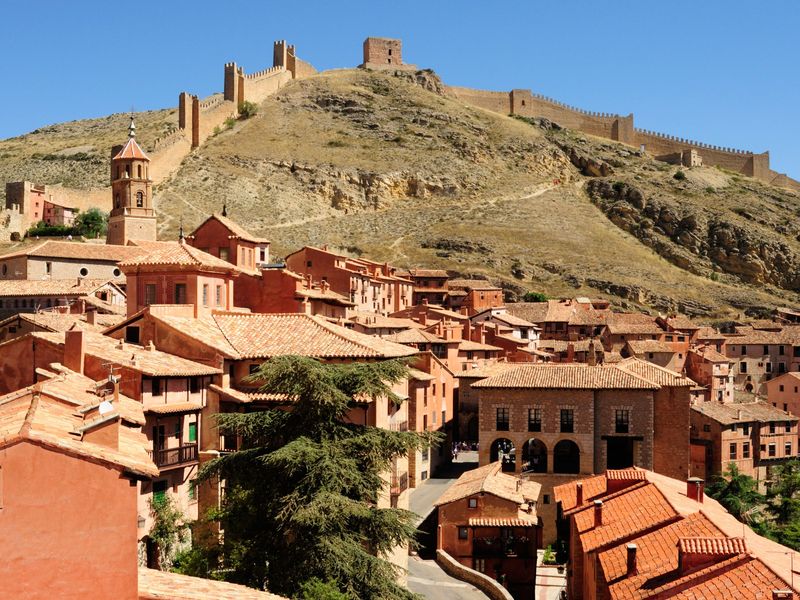
Pink-hued medieval buildings cling impossibly to a rocky ridge surrounded by pine forests in what many Spaniards consider their country’s most beautiful town. Albarracín looks virtually unchanged since Moorish times, with winding streets so narrow neighbors can shake hands between windows.
The distinctive reddish-pink color comes from local clay used in construction for centuries. Wooden balconies with intricate carvings project over streets barely wide enough for a donkey cart, creating magical light patterns as the sun moves across the sky.
Cats nap on ancient stone steps while the scent of slow-cooked stews wafts from tiny restaurants. Climbers come for world-class bouldering in surrounding canyons, but few other international visitors discover this gem. The cathedral houses a tapestry collection rivaling many in major cities, displayed in relative obscurity.
17. Ronda, Spain Cliffs
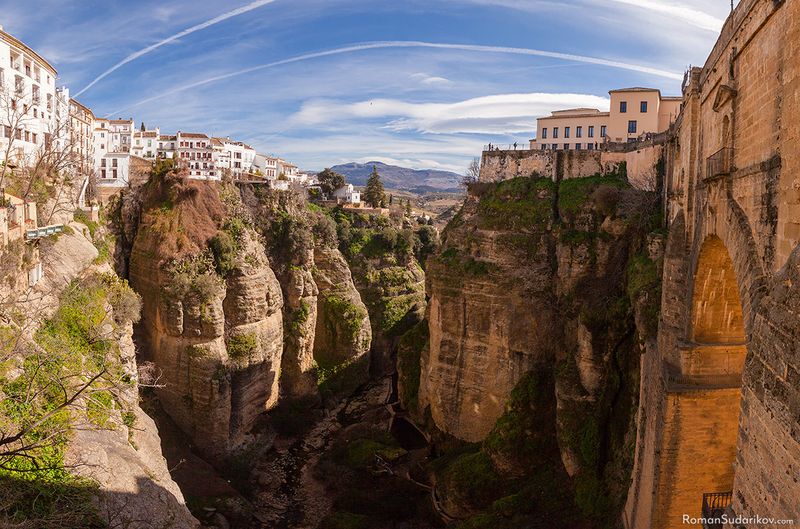
A city literally split in two by a 390-foot deep gorge creates one of Spain’s most dramatic landscapes. The Puente Nuevo bridge spans this massive chasm, connecting Ronda’s old and new quarters with architecture that seems to defy gravity.
Hemingway and Orson Welles fell in love with this mountaintop city, spending long periods writing here. Spain’s oldest bullring provides fascinating historical context even for those opposed to the practice – it’s where modern bullfighting rules were established.
Wine bodegas offer tastings of local vintages produced from grapes grown in high-altitude vineyards. Hiking paths lead down into the gorge where secret gardens thrive in the microclimate. Arab baths from the Islamic period remain remarkably intact, offering glimpses into the town’s complex cultural history spanning Moorish, Jewish, and Christian influences.
18. Luang Prabang, Laos Magic
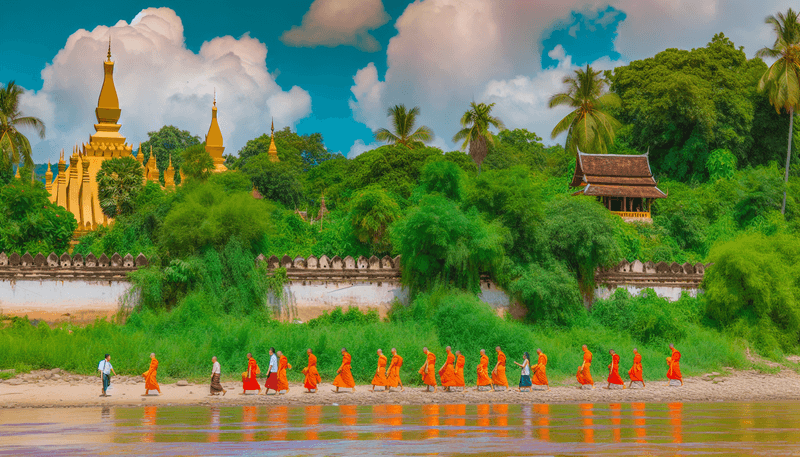
Mist rises from the Mekong River each morning as orange-robed monks process silently through streets lined with French colonial buildings and golden temples. This UNESCO-protected town achieves perfect balance between natural beauty, spiritual significance, and architectural harmony.
Waterfalls with turquoise pools hide in nearby jungles, offering natural swimming opportunities. Traditional wooden houses on stilts stand alongside elegant mansions from the French colonial period, now converted to boutique hotels and restaurants.
Night markets feature intricate textiles hand-woven by hill tribe women using patterns passed down for generations. Wake early to witness tak bat – hundreds of monks collecting alms in an ancient ritual that connects the community. The pace here remains deliberately slow despite increasing tourism, with strict regulations preserving the town’s magical atmosphere.
19. Český Krumlov, Czech Gem
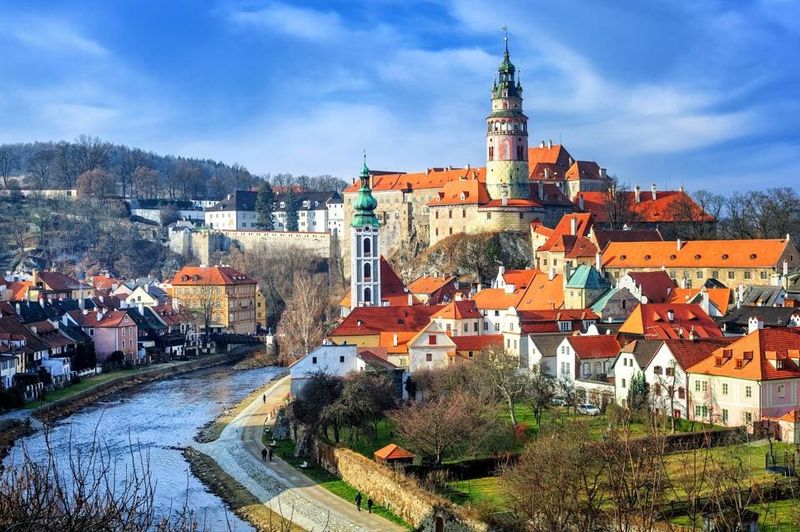
A fairytale castle towers over this perfectly preserved medieval town where the Vltava River loops around the historic center like a natural moat. While Prague faces overtourism, Český Krumlov offers similar architectural splendor with a fraction of the crowds.
The massive castle complex features a unique Baroque theater with original 18th-century stage machinery still in working order. Performances using these ancient mechanisms occur just a few times yearly due to preservation concerns.
Rafting down the gentle river provides unique perspectives of the town as you float beneath stone bridges. Traditional Czech taverns serve hearty food and Budvar beer – the original Budweiser – in centuries-old cellars. Artists and craftspeople maintain studios in buildings dating to the 1400s, selling handmade puppets, ceramics, and glassware directly to visitors.
20. Tétouan, Morocco Mystery
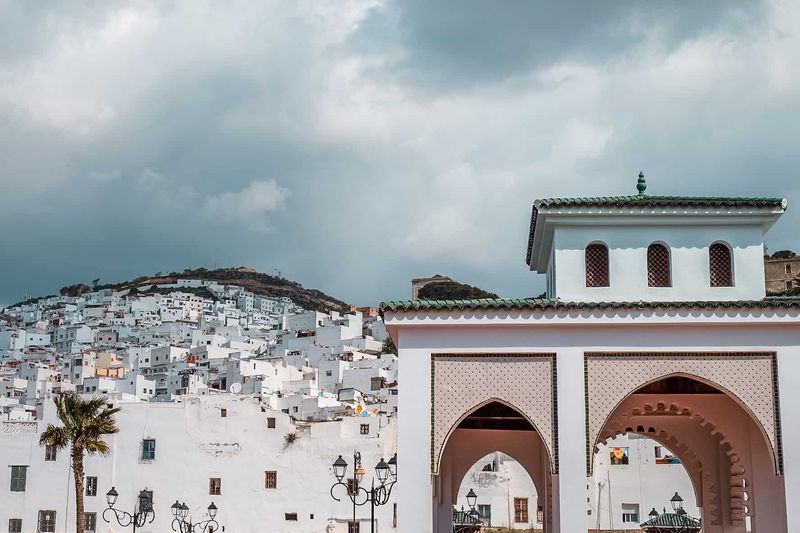
Spanish and Moroccan influences blend perfectly in this whitewashed city nestled against the Rif Mountains just a few miles from the Mediterranean. Tétouan’s medina remains one of North Africa’s most authentic and least touristed, despite being a UNESCO World Heritage site.
Jewish, Muslim, and Spanish quarters each maintain distinct architectural styles while connecting through a labyrinth of narrow alleys. The Spanish influence comes from Andalusian refugees who settled here after being expelled from Spain in the 15th century.
Artisans practice traditional crafts in small workshops – leather, weaving, and metalwork – using techniques unchanged for centuries. The royal palace features stunning gardens where orange trees perfume the air. Unlike Marrakech or Fez, tourist hassle is minimal, allowing genuine cultural experiences and conversations with locals eager to share their heritage.
21. Cēsis, Latvia History
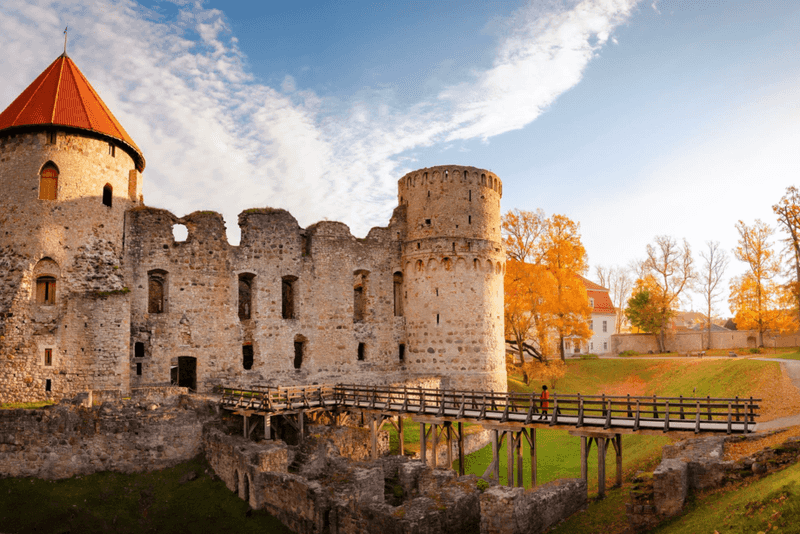
Knights once roamed the impressive castle ruins that dominate this charming Latvian town where medieval history feels tangibly present. During summer evenings, visitors explore the castle by candlelight, carrying lanterns through ancient stone corridors.
The old town features wooden houses painted in soft pastels alongside grand manor buildings from various historical periods. Latvia’s oldest brewery operates here, producing craft beers using local spring water and traditional methods.
Forests and lakes surround Cēsis, with hiking paths leading to hidden swimming spots and unusual rock formations. The Gauja National Park creates a natural playground just minutes from town. Folk traditions remain strong – during summer solstice, locals still gather to make flower crowns, light bonfires, and sing traditional songs that have been passed down for generations.
